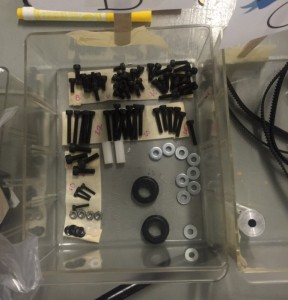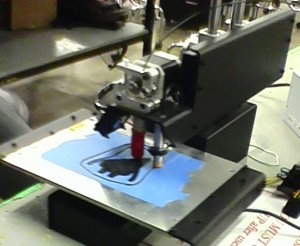The first time I heard about 3-D printing it seemed to me like listening to a science fiction story. So seeing one working for the first time was very exciting and even more exciting was the fact that I was actually going to get to build one!
As the week began I was very curious to see how we were going to go about building a complex machine, how much time and effort we would need to put in, and how well the machine would actually work. I could summarize the building of the 3-D printer in the following steps
Step one: CAD and printing
As part of the introductory process , our supervisor, Dr Wettergreen, walked us through learning a computer aided design (CAD) software and seeing how that links up with the printing . We basically learnt to use it in one day! We created a few models and sent them to the printing lab.
Step two : the printing process
It was a magical experience to actually see something that I had designed actually being printed out-to see how the printer prints layer by layer as form slowly emerges. The printing process is indeed slow even with state of the art machines but this is because it is an emerging technology. This fact,that I was working on a technology that is in its infancy is like a dream – and seeing the printing in process helped cement that feeling.
Step three: assembling – more steps
The assembly process was actually easier than I expected because of the clear instructions that we were given. We were given a step by step guide on how to assemble the machine with about 30 steps in total.
 all the screws we needed to tie things together.
all the screws we needed to tie things together.
Step four calibrating
Tuning the machine was quite long – we even had to do a bit of rewiring at a certain point. I found the process beneficial because I understood what parameters mattered the most for a printer to work well.
The week in general
This week in general was a very fulfilling week. It was also great working with Harrison Lin from Rice he is nice person and quite crafty. I learnt this week that sometimes a seemingly complex task can become very easy if one breaks it down into small organised steps. I feel I will apply that strategy in future.
So I built a 3-D printer! Dr Wettergreen explained that we were doing similar to what people would do back in the 1980’s when people would build and experiment with PC’s in their garages. This made me think what PC’S would be like in Malawi today if in the 80’s Malawian interns had come to America to learn to build PC’s. Maybe they did or maybe they did not. But this week I was quite honored to be part of this technology revolution.
![WP_20150610_17_10_33_Pro[1]](http://usa.blogs.rice.edu/files/2015/06/WP_20150610_17_10_33_Pro1-1fty9jp-169x300.jpg)
